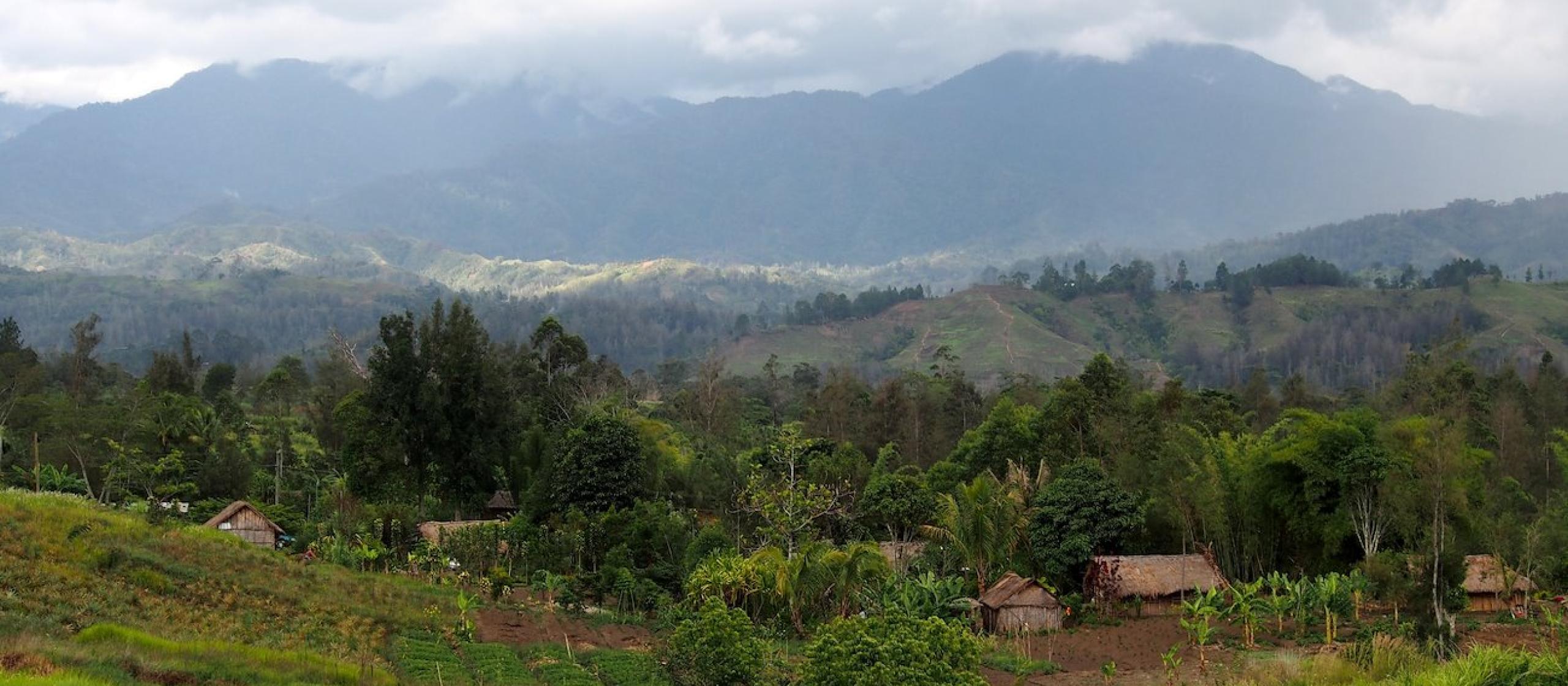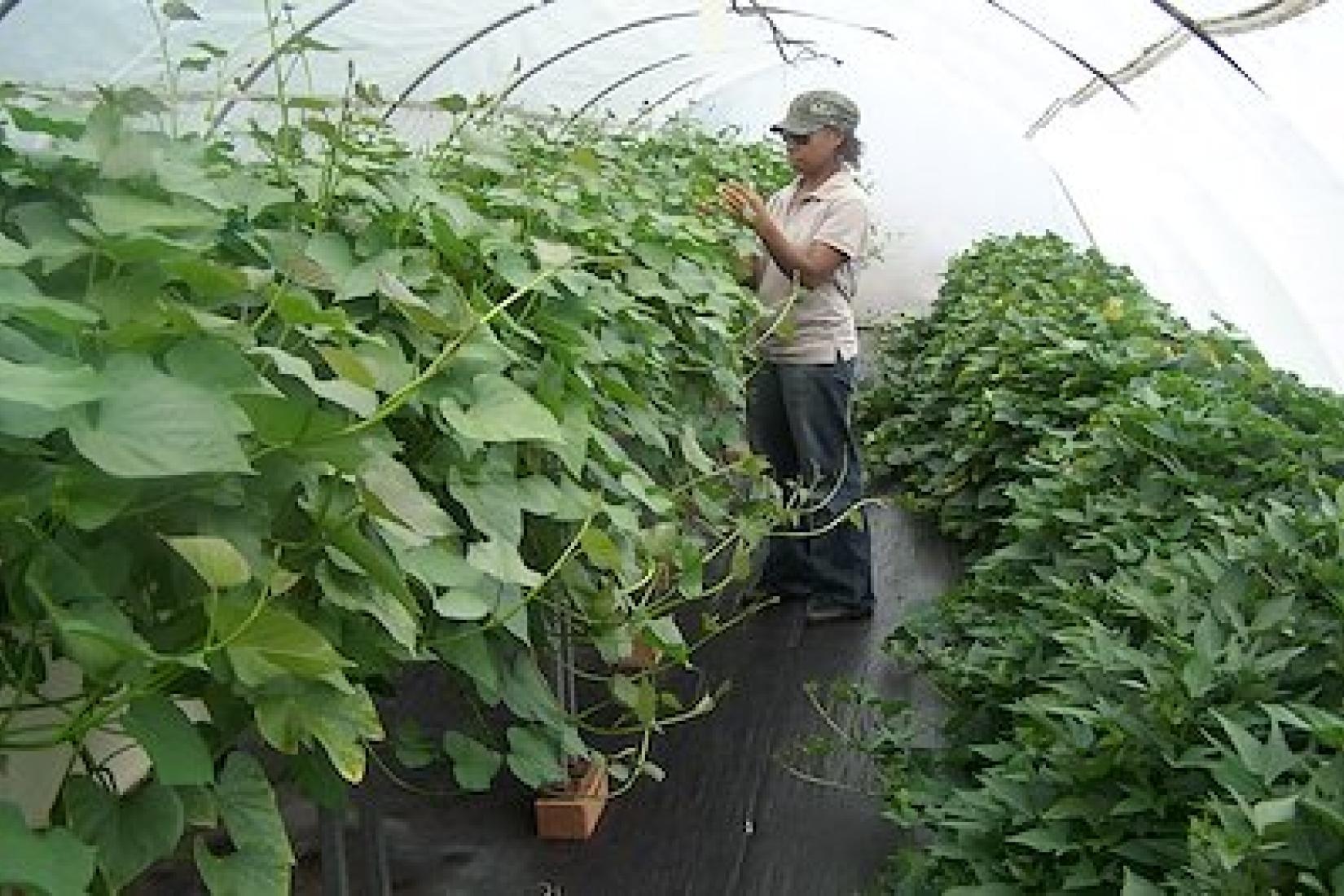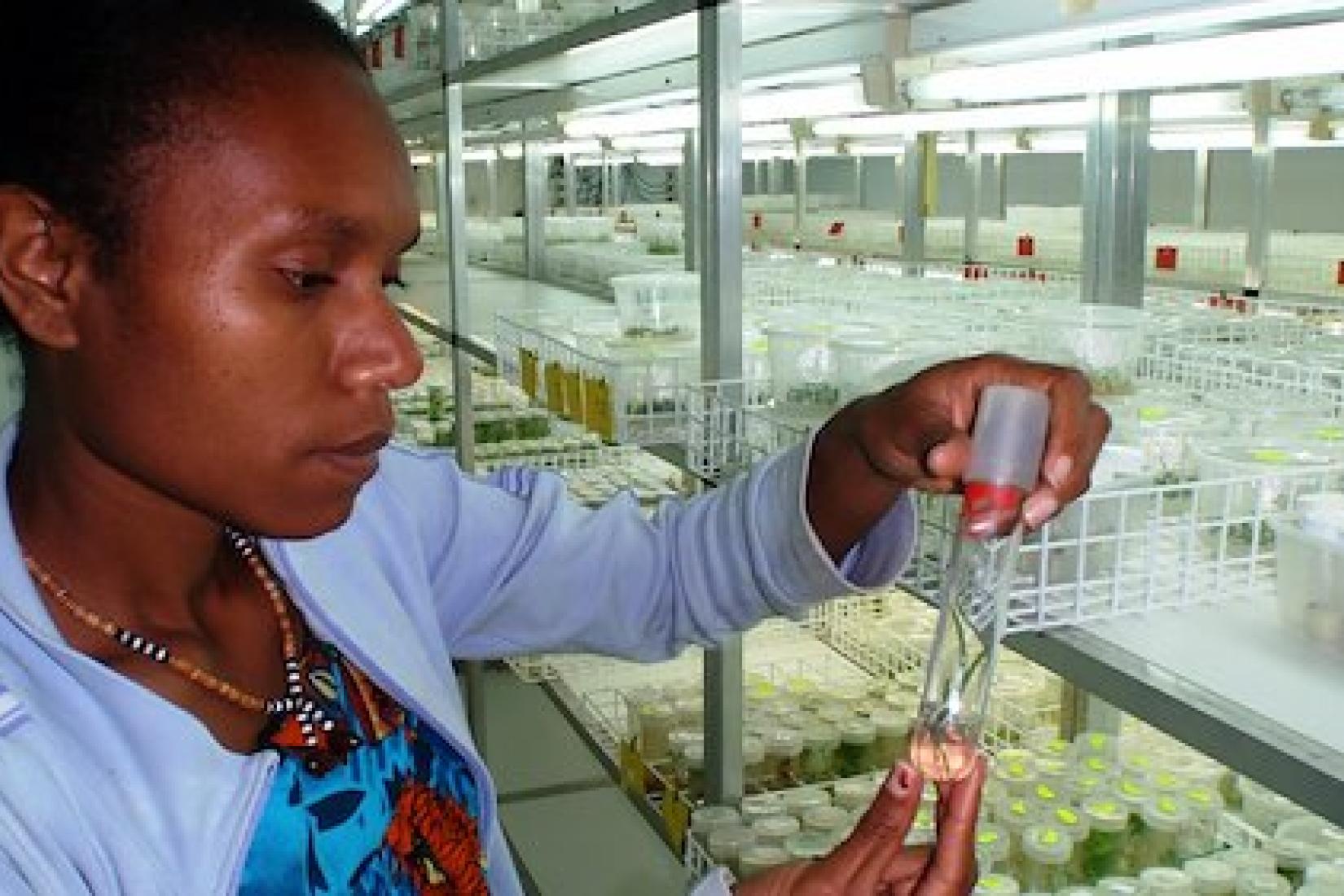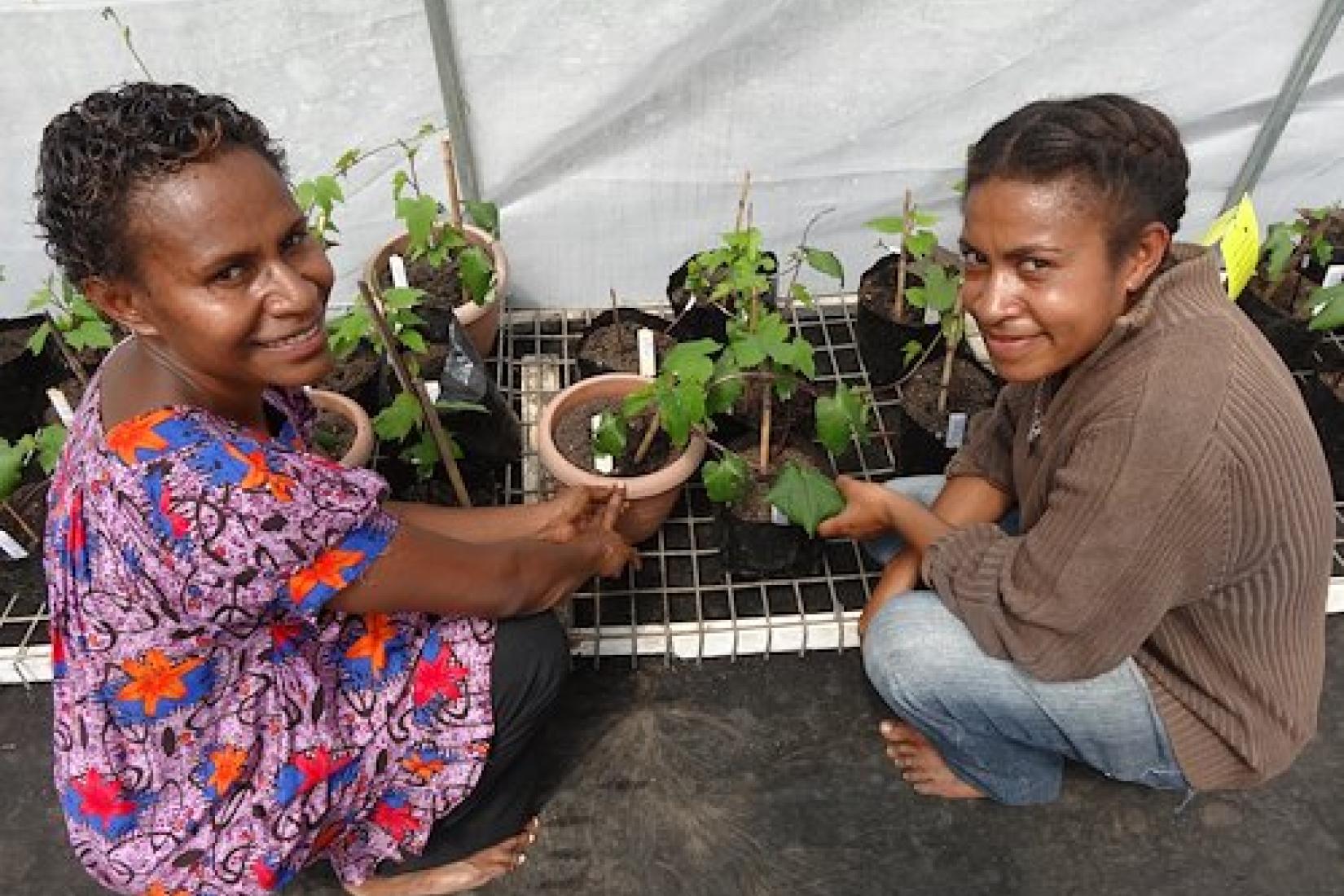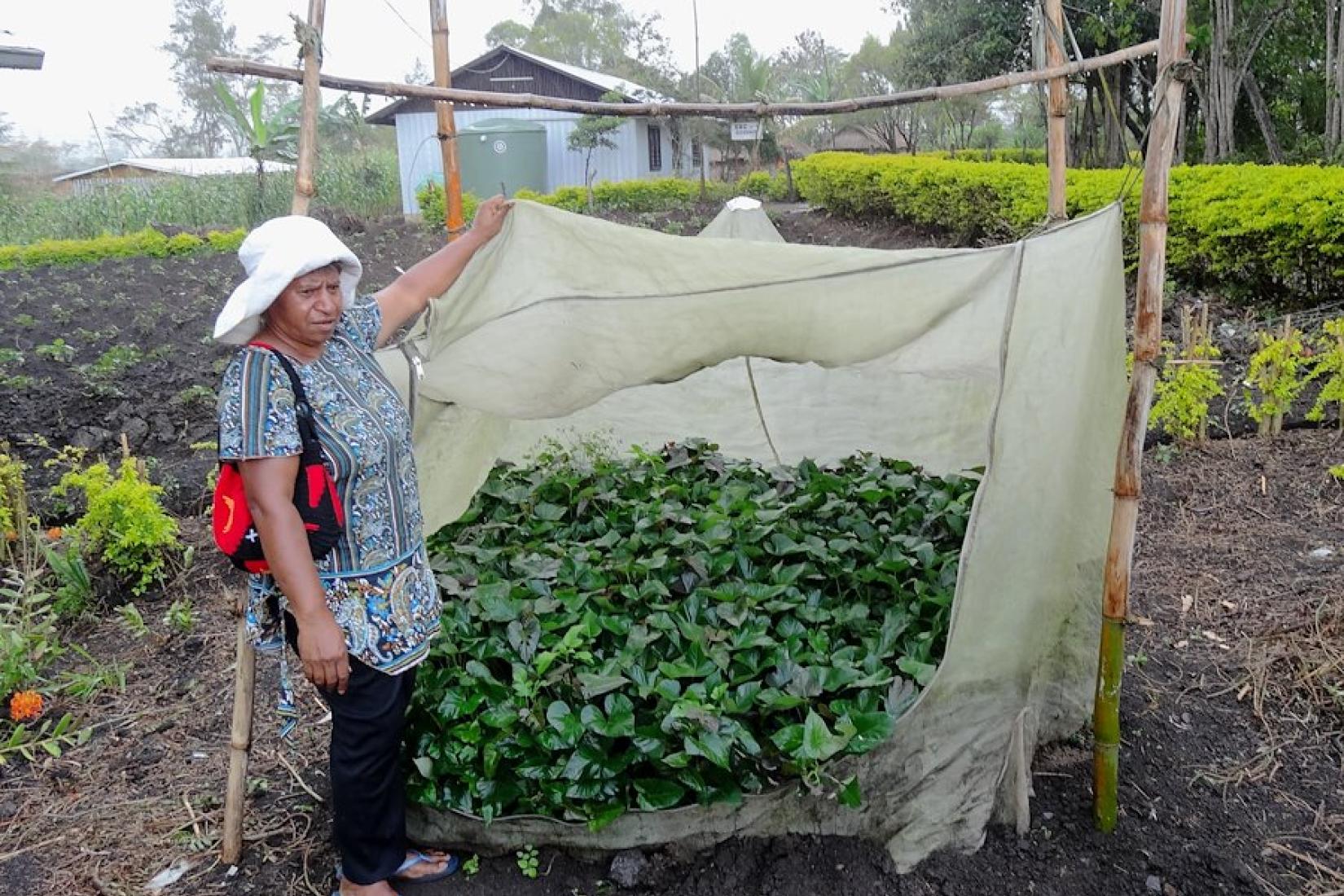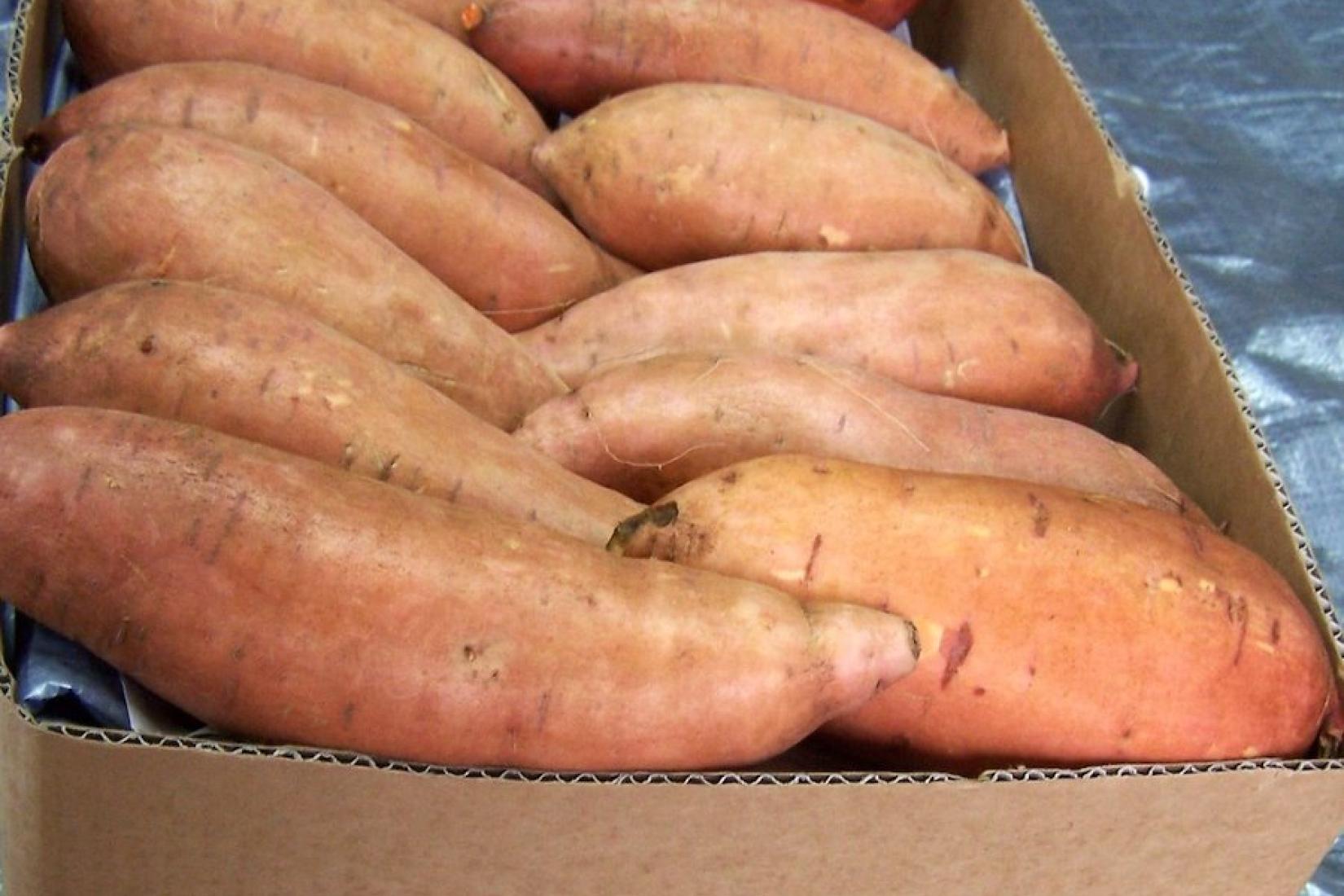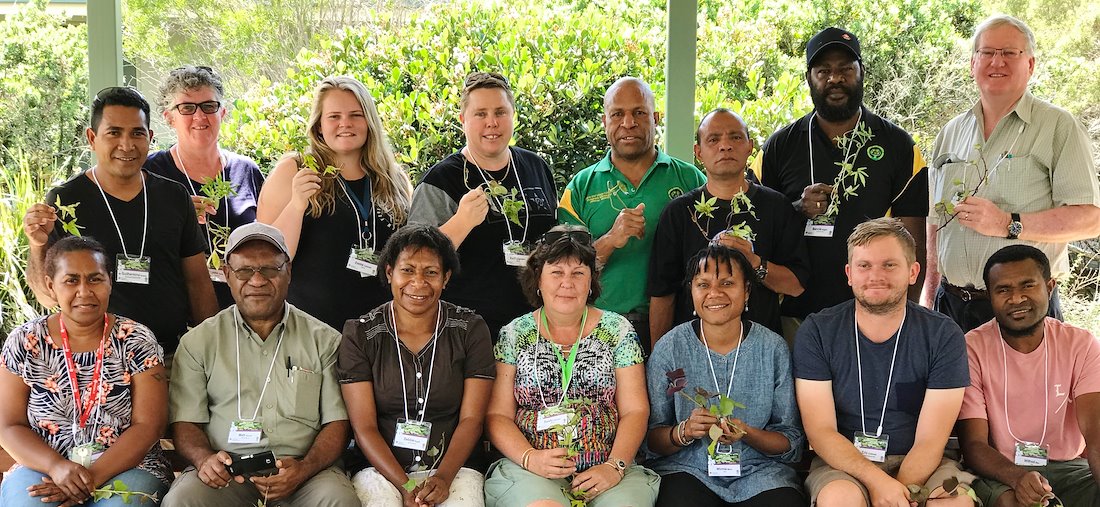Equally important to producing PT planting material, is knowing what viruses are in-country and what biosecurity threats exist in the region. To assist in gaining knowledge of these threats and proactively reducing them, Queensland’s Department of Agriculture and Fisheries (DAF), a collaborating institute on the project, recently coordinated a workshop on Sweet potato production and PT technology. The workshop was designed to discuss and standardise;
- the processes used in producing PT planting material
- the current diagnostic technologies being used for sweet potato virus detection
- managing PT planting material in a ‘seed scheme’
- using PT planting material on-farm
The workshop was attended by research and development officers from DAF, National Agricultural Research Institute (NARI) PNG; Fresh Produce Development Agency (FPDA) PNG, ANU Enterprise, National Directorate for Quarantine and Biosecurity (DNQB) Timor-Leste Ministry of Agriculture and Fisheries, Northern Agriculture Quarantine Strategy and Aus Sweet potato Seed. It was also supported by Central Queensland University (CQU), University of Southern Queensland (USQ), Henderson RDE, Aus Sweet potato Seed and sweet potato farmers in Bundaberg and Rockhampton.
Sandra Dennien, Michael Hughes and Rachael Langenbaker, workshop coordinators, commented that it was excellent to see the very high levels of interest, enthusiasm, enjoyment of learning and openness to discussion the participants brought to the workshop. Participant Matt Kanua summed up his view of the workshop by saying, “Prior to the workshop, despite having used PT planting materials in a project, I did not fully appreciate the potential of it. However after this exposure I can fully see the impact it can have for our farmers”. Everyone mentioned that it was not only the scientific aspects of the course that were important, but that our collaborative research and development will definitely benefit from the commradery and professional relationships that evolved during the workshop.
Words courtesy of Michael Hughes, Farming Systems Officer at DAF.
